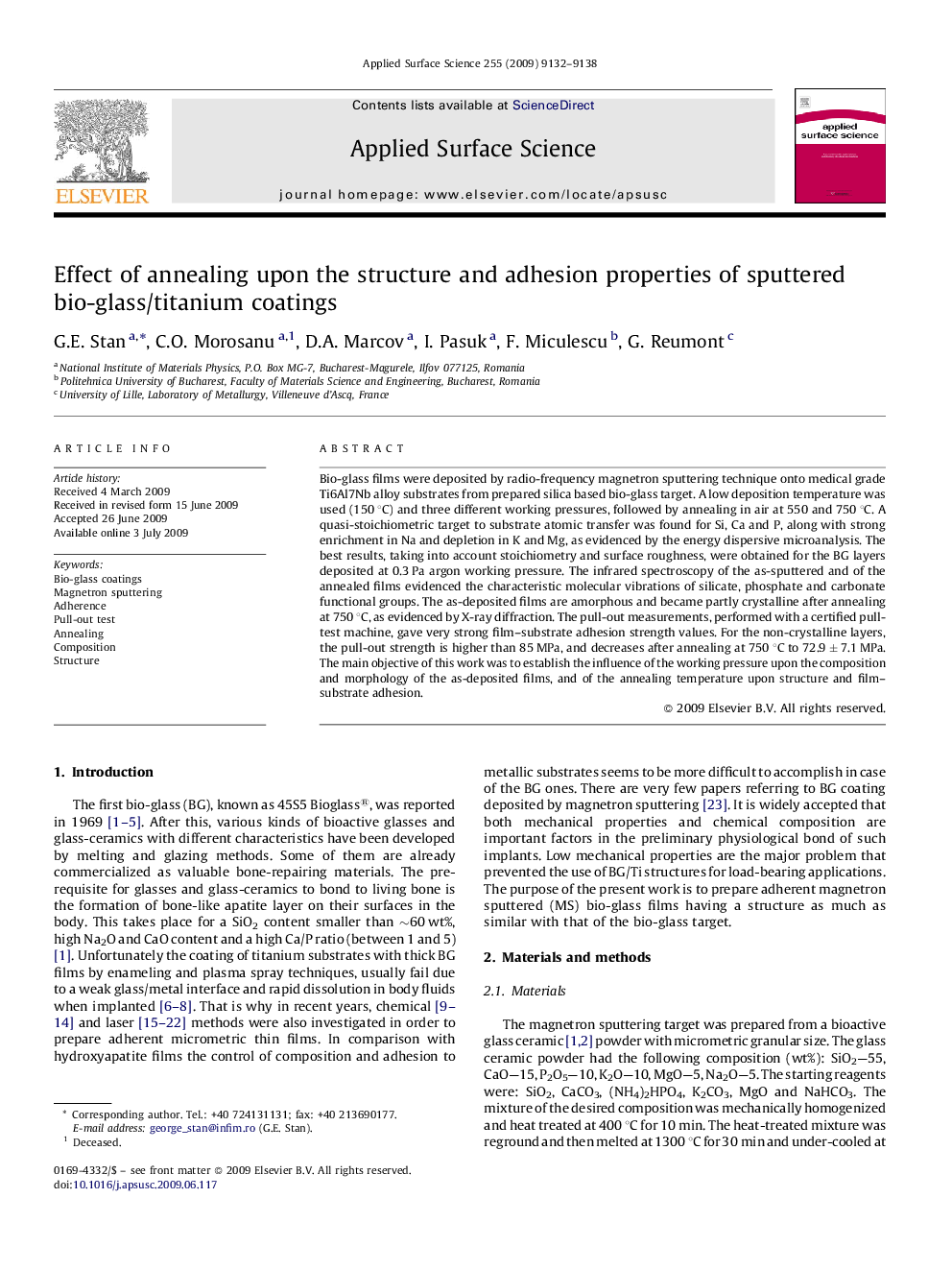| Article ID | Journal | Published Year | Pages | File Type |
|---|---|---|---|---|
| 5369057 | Applied Surface Science | 2009 | 7 Pages |
Bio-glass films were deposited by radio-frequency magnetron sputtering technique onto medical grade Ti6Al7Nb alloy substrates from prepared silica based bio-glass target. A low deposition temperature was used (150 °C) and three different working pressures, followed by annealing in air at 550 and 750 °C. A quasi-stoichiometric target to substrate atomic transfer was found for Si, Ca and P, along with strong enrichment in Na and depletion in K and Mg, as evidenced by the energy dispersive microanalysis. The best results, taking into account stoichiometry and surface roughness, were obtained for the BG layers deposited at 0.3 Pa argon working pressure. The infrared spectroscopy of the as-sputtered and of the annealed films evidenced the characteristic molecular vibrations of silicate, phosphate and carbonate functional groups. The as-deposited films are amorphous and became partly crystalline after annealing at 750 °C, as evidenced by X-ray diffraction. The pull-out measurements, performed with a certified pull-test machine, gave very strong film-substrate adhesion strength values. For the non-crystalline layers, the pull-out strength is higher than 85 MPa, and decreases after annealing at 750 °C to 72.9 ± 7.1 MPa. The main objective of this work was to establish the influence of the working pressure upon the composition and morphology of the as-deposited films, and of the annealing temperature upon structure and film-substrate adhesion.
